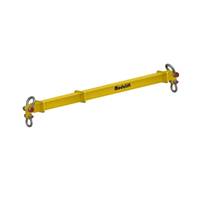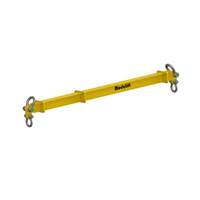
Modulift Spreader Beams Meet Revised DNV Standard
launched a new nautical series of spreader beams for subsea environments, designed to safely lift weights of up to 500 tons. The subsea range has an open section design, suited to water submersion by eliminating the risks associated with cavity or pressure issues. They are finished with a three-coat paint system that is based on a two-pack epoxy paint combination suitable for the marine environment. They are fully and correctly assembled when combined with the recommended end units, drop links and shackles top and bottom, that also allow for the option to use ROV shackles where necessary. The
New Subsea Modular Spreader Beams
Modulift has revealed its newest product range, Subsea Modular Spreader Beams, designed to safely hold weights up 500 metric tons. The subsea modular beams have an open section design suitable for water submersion by eliminating the risks of any cavity or pressure issues and are finished with a three-coat paint system based on a two-pack epoxy paint combination. Modular elements produce a new collection for deep water lifting. modulift.com (As published in the March 2015 edition of Marine Technology Reporter - http://www.marinetechnologynews.com/Magazine)

New Subsea Modular Spreader Beams
weights up 500 metric tons. Unlike Modulift’s standard Spreader Beams that are manufactured using circular hollow section, the Subsea has an open section design suitable for water submersion by eliminating the risks of any cavity or pressure issues. They are finished with a three-coat paint system that is based on a two-pack epoxy paint combination suitable for the marine environment. Modulift’s modular engineering is again reflected to offer users the economical ability to reuse their products time and time again, providing a cost effective solution to Subsea heavy lifting
Second Staten Island Ferry Ecospeed Application
need to be sailing so the best time for drydocking is the off season when there are fewer passengers. For this reason the majority of the ferries come into drydock for a short time during the winter months. The owner is then presented with bad weather conditions in which to perform repair work to the paint system, and often a quality paint job cannot be assured. It is therefore essential to reduce the maintenance and paint work that has to be done in drydock. The use of Ecospeed on the hulls, however, opens the door to optimizing their fuel efficiency. Ferries sail on a fixed route, so the ports



 February 2024
February 2024





